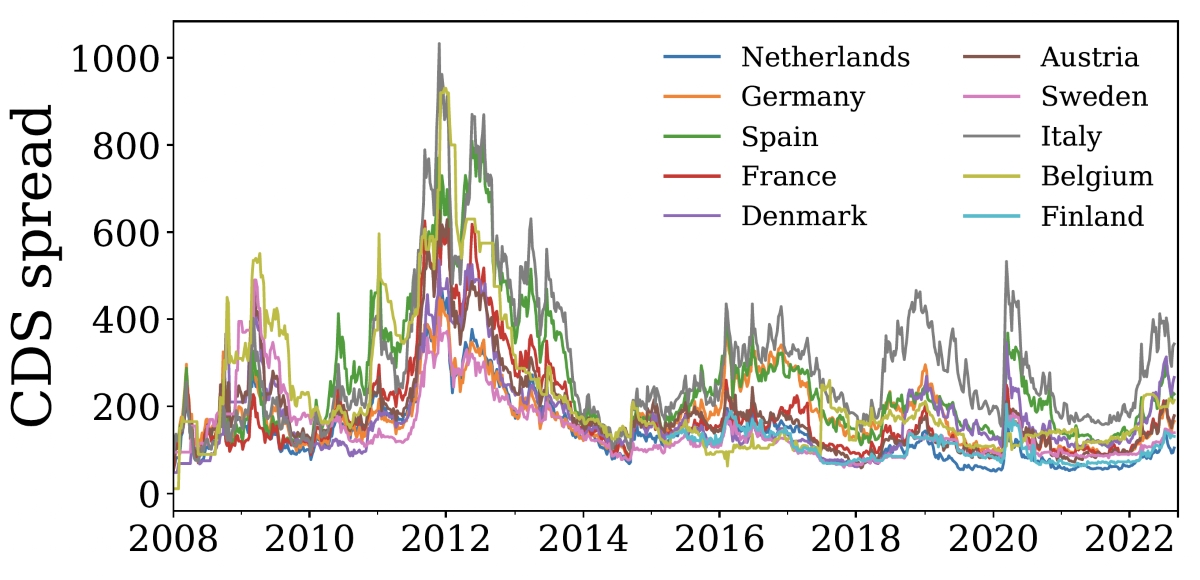

Finance
What Is Medical Gap Insurance?
Published: November 15, 2023
Learn how medical gap insurance can help you manage your finances and cover unexpected medical expenses. Find out what medical gap insurance is and how it works.
(Many of the links in this article redirect to a specific reviewed product. Your purchase of these products through affiliate links helps to generate commission for LiveWell, at no extra cost. Learn more)
Table of Contents
Introduction
When it comes to managing your finances, one area that cannot be overlooked is healthcare. Healthcare costs can be unpredictable and can put a strain on your budget if you’re not prepared. That’s where medical gap insurance comes in. Medical gap insurance is a supplemental insurance policy that helps cover the “gap” between what your primary health insurance plan covers and the actual medical costs you may incur.
Medical gap insurance is specifically designed to assist individuals or families who have high deductible health insurance plans. With these plans, you are responsible for paying a significant amount of your medical expenses out of pocket before your insurance coverage kicks in. This can be a significant financial burden, especially if you require expensive medical treatments or procedures.
By purchasing medical gap insurance, you can protect yourself from these high out-of-pocket costs. It provides an extra layer of coverage that can help alleviate the financial stress associated with medical expenses. Medical gap insurance works alongside your primary health insurance plan, filling in the gaps and providing coverage for deductibles, co-pays, and other out-of-pocket expenses.
One of the key benefits of medical gap insurance is that it allows you to have more choice and control over your healthcare. With traditional health insurance plans, you may be limited to a network of doctors and healthcare providers. However, with medical gap insurance, you have the freedom to choose any healthcare provider, regardless of whether or not they are in-network. This gives you the flexibility to seek out the best possible care without worrying about the financial implications.
It’s important to note that medical gap insurance is not a replacement for primary health insurance. It is meant to supplement your existing coverage and provide an extra layer of financial protection. Medical gap insurance typically does not cover pre-existing conditions or preventive care, as these are usually covered by your primary health insurance plan.
In the following sections, we will delve deeper into the intricacies of medical gap insurance, including its coverage and benefits, how it works, eligibility and enrollment details, and a comparison with other health insurance options. By the end of this guide, you will have a comprehensive understanding of medical gap insurance and be equipped to make an informed decision about whether it is the right choice for you.
Understanding Medical Gap Insurance
Medical gap insurance is a type of supplemental insurance that bridges the gap between what your primary health insurance plan covers and the actual medical expenses you may incur. It is often referred to as “supplemental gap” or “healthcare cost gap” insurance.
Essentially, medical gap insurance provides additional coverage for out-of-pocket costs such as deductibles, co-pays, and co-insurance that are not covered by your primary health insurance plan. This can be especially helpful if you have a high deductible health insurance plan, where you are responsible for paying a significant portion of your medical expenses before your insurance coverage kicks in.
With medical gap insurance, you can have peace of mind knowing that there is an extra layer of financial protection in place. It helps protect you from unexpected and costly medical expenses, allowing you to focus on your health without worrying about the financial implications.
One important thing to understand about medical gap insurance is that it typically does not cover pre-existing conditions. This means that if you have a pre-existing medical condition, any related expenses may not be covered by your medical gap insurance policy. However, it is always important to carefully review the terms and conditions of your specific policy to understand what is covered and what is not.
Another factor to consider when it comes to medical gap insurance is that it may have certain limitations and exclusions. For example, there may be limits on the maximum benefit amount that can be claimed, as well as exclusions for certain treatments or procedures. It is crucial to thoroughly review the policy details and speak with an insurance representative to fully understand the coverage provided.
It’s also worth mentioning that medical gap insurance is not the same as Medicare Supplement Insurance, also known as Medigap. Medigap policies cater specifically to individuals with Medicare coverage, while medical gap insurance is designed for those with private health insurance plans.
In summary, medical gap insurance is a supplemental insurance policy that helps cover the gaps in your primary health insurance coverage. It provides extra financial protection, particularly for individuals with high deductible health insurance plans. Understanding the nuances of medical gap insurance is important in order to make an informed decision about whether it is the right choice for your healthcare needs.
Coverage and Benefits of Medical Gap Insurance
Medical gap insurance provides coverage for a variety of out-of-pocket medical expenses that are not covered by your primary health insurance plan. While the specific coverage may vary depending on the insurance provider and plan you choose, here are some common benefits and services offered by medical gap insurance:
- Deductibles: Medical gap insurance can help cover the deductible amount required by your primary health insurance plan. This means that if you have a high deductible and need to undergo a medical procedure or receive treatment, your medical gap insurance can help shoulder the cost of the deductible.
- Co-pays and Co-insurance: Many health insurance plans require you to pay a portion of the medical expenses in the form of co-pays or co-insurance. Medical gap insurance can help cover these additional costs, reducing your out-of-pocket expenses.
- Out-of-Network Coverage: Unlike traditional health insurance plans that often limit coverage to in-network healthcare providers, medical gap insurance allows you to receive treatment from out-of-network providers. This gives you the freedom to choose the doctors and specialists you prefer, without worrying about the financial implications.
- Prescription Drugs: Some medical gap insurance plans offer coverage for prescription drugs that may not be fully covered by your primary health insurance plan. This can help offset the cost of necessary medications.
- Emergency Room Visits: Medical emergencies can result in steep expenses, especially if you need to visit the emergency room. Medical gap insurance can cover a portion of these costs, providing financial relief during unexpected situations.
- Hospital Stays and Surgical Procedures: If you require hospitalization or undergo a surgical procedure, medical gap insurance can help cover the associated expenses not covered by your primary health insurance plan, such as anesthesia, facility fees, and other medical services.
It’s important to note that the coverage and benefits of medical gap insurance can vary depending on the specific insurance provider and plan you choose. Some plans may offer more comprehensive coverage, while others may have limitations or exclusions. It’s crucial to carefully review the policy details and consult with an insurance representative to understand the coverage provided by the medical gap insurance plan you are considering.
Having medical gap insurance can provide you with added peace of mind, knowing that you have financial protection in place for unexpected medical expenses and out-of-pocket costs. It can help alleviate the financial burden associated with healthcare and allow you to focus on your health and well-being.
How Medical Gap Insurance Works
Medical gap insurance works in conjunction with your primary health insurance plan to provide additional coverage for out-of-pocket medical expenses. Here’s a breakdown of how medical gap insurance typically works:
1. Primary Health Insurance: You must first have a primary health insurance plan in place. This could be an employer-sponsored plan, an individual plan purchased through the marketplace, or any other qualifying health insurance coverage.
2. Incurred Medical Expenses: When you receive medical treatment, whether it’s a doctor visit, hospitalization, or surgery, you will typically have out-of-pocket expenses such as deductibles, co-pays, and co-insurance. These are the costs that fall within the “gap” that medical gap insurance aims to cover.
3. Claim Submission: After your primary health insurance plan has processed your claim and determined the amount they will cover, you will receive an explanation of benefits (EOB) statement. This statement outlines the portion of the medical expenses that you are responsible for.
4. Gap Coverage: Once you have received your EOB statement, you can submit the remaining out-of-pocket expenses to your medical gap insurance provider. The medical gap insurance plan will then assess the claim and determine the amount they will cover based on the policy’s coverage limit and benefits.
5. Reimbursement: If your claim is approved, the medical gap insurance provider will reimburse you for the approved amount. The reimbursement can be used to cover the remaining out-of-pocket expenses related to your medical treatment.
It’s important to note that each medical gap insurance plan may have specific rules and requirements when it comes to claim submission and reimbursement. It is crucial to review the terms and conditions of your specific policy to understand the claim process and any documentation or paperwork that may be required.
Furthermore, medical gap insurance typically does not require you to receive prior authorization or referrals for medical treatments or specialists. This gives you the freedom to seek care from any healthcare provider, whether they are in-network or out-of-network. However, it’s always a good idea to check with your medical gap insurance provider to ensure the provider you choose will be covered under your policy.
In summary, medical gap insurance provides additional coverage for out-of-pocket medical expenses that are not covered by your primary health insurance plan. It works by reimbursing you for the eligible expenses once your primary health insurance has processed the claim. Understanding how medical gap insurance works can help you make informed decisions about your healthcare financial protection.
Eligibility and Enrollment for Medical Gap Insurance
In order to be eligible for medical gap insurance, you typically need to have an existing primary health insurance plan. Medical gap insurance is designed to supplement your primary coverage and provide additional financial protection for out-of-pocket medical expenses. Whether you have a group health insurance plan through your employer or an individual plan, you may be eligible for medical gap insurance.
Enrollment for medical gap insurance can vary depending on the insurance provider and the specific plan you choose. Here are a few common ways to enroll:
- Employer Enrollment: If you have a group health insurance plan through your employer, they may offer medical gap insurance as an additional benefit. During your employer’s open enrollment period, you can sign up for medical gap insurance if it is available.
- Individual Enrollment: If you have an individual health insurance plan, you can typically enroll in medical gap insurance during the open enrollment period for individual and family health insurance plans. This period usually occurs once a year, but there may be special enrollment periods available in certain circumstances, such as losing coverage or experiencing a qualifying life event.
- Insurance Providers: Some insurance providers offer medical gap insurance directly to individuals. You can research different insurance providers and compare their plans to find the best fit for your needs. The enrollment process will vary depending on the provider, but it usually involves filling out an application and providing the necessary information.
- Insurance Brokers: Working with an insurance broker can also be a helpful way to find and enroll in medical gap insurance. Insurance brokers have access to multiple insurance providers and can help you navigate the options, compare plans, and enroll in the one that suits you best.
During the enrollment process, you may be required to provide information about your primary health insurance coverage and undergo medical underwriting. Medical underwriting involves answering questions about your health history and any pre-existing conditions you may have. Based on this information, the insurance provider will determine your eligibility and premium rates.
It’s important to note that medical gap insurance enrollment periods may be limited, so it’s advisable to enroll during the designated periods to ensure coverage. Additionally, the availability of medical gap insurance can vary depending on your location and the insurance providers in your area. It’s always a good idea to conduct thorough research and speak with insurance professionals to ensure you understand the options available to you.
Overall, medical gap insurance can provide an extra layer of financial protection for individuals with high deductible health insurance plans. Understanding the eligibility requirements and enrollment process can help you take advantage of this valuable coverage and alleviate the financial burden of medical expenses.
Pros and Cons of Medical Gap Insurance
Medical gap insurance offers several advantages, but it also has its limitations. Evaluating the pros and cons can help you determine whether medical gap insurance is the right choice for your healthcare needs. Here are some key factors to consider:
Pros:
- Financial Protection: Medical gap insurance provides an additional layer of financial protection by covering the gaps in your primary health insurance coverage. It can help reduce out-of-pocket expenses, especially for individuals with high deductible health plans, and provide peace of mind when it comes to unexpected medical expenses.
- Freedom of Choice: Unlike traditional health insurance plans with limited networks, medical gap insurance allows you the freedom to choose any healthcare provider you prefer, even if they are out-of-network. This gives you more flexibility and control over your healthcare decisions.
- Out-of-Pocket Cost Coverage: With medical gap insurance, you can receive coverage for out-of-pocket costs such as deductibles, co-pays, and co-insurance. This can significantly reduce your financial burden and make healthcare more affordable.
- Supplemental Benefit: Medical gap insurance is designed to supplement your existing health insurance coverage. It can enhance the benefits and services offered by your primary plan, providing additional coverage where it may be lacking.
- Additional Coverage Options: Medical gap insurance often offers a range of coverage options to suit different needs and budgets. This allows you to choose a plan that best aligns with your specific healthcare requirements.
Cons:
- Cost: Medical gap insurance comes with its own cost, which is an additional premium separate from your primary health insurance premiums. This means you will need to consider the expense when budgeting for healthcare.
- Exclusions and Limitations: Like any insurance policy, medical gap insurance may have certain exclusions and limitations on coverage. Pre-existing conditions, certain treatments or procedures, and specific benefit caps are common examples. It’s crucial to carefully review the terms and conditions of the policy to understand what is covered and what is not.
- Eligibility Requirements: To be eligible for medical gap insurance, you generally need to have an existing primary health insurance plan in place. This means you cannot get medical gap insurance if you do not have primary coverage.
- Additional Paperwork: While medical gap insurance can provide valuable coverage, it may require additional paperwork and claims processing. You’ll need to submit claims to both your primary health insurance and medical gap insurance providers, which can be time-consuming.
It’s important to carefully evaluate the pros and cons of medical gap insurance based on your specific healthcare needs and budget. Consider factors such as your current health insurance plan, financial situation, and anticipated healthcare expenses when deciding whether medical gap insurance is the right choice for you.
Comparing Medical Gap Insurance with Other Health Insurance Options
When considering your health insurance options, it’s important to compare medical gap insurance with other available alternatives. Here are some key points to consider when comparing medical gap insurance with other health insurance options:
Primary Health Insurance:
- Scope of Coverage: Primary health insurance typically offers comprehensive coverage for a wide range of medical services, including preventive care, hospitalization, and prescription drugs. However, it often comes with deductibles, co-pays, and co-insurance that can lead to significant out-of-pocket expenses.
- Network Restrictions: Primary health insurance plans often have a network of preferred healthcare providers. Care received outside of this network may not be covered or may have higher out-of-pocket costs.
- Preventive Care: Primary health insurance plans often cover preventive care services, such as vaccinations and screenings, at no additional cost to the insured individual.
Medicare Supplement Insurance (Medigap):
- Eligibility: Medigap policies are specifically designed to supplement Medicare coverage for individuals aged 65 and older or those with specific disabilities.
- Standardized Coverage: Medigap plans are standardized and offer additional coverage options beyond what Medicare covers, such as deductibles, co-pays, and co-insurance. Each plan is labeled with a letter (e.g., Plan F or Plan G), and the benefits are the same regardless of the insurer.
- Prescription Drug Coverage: Medigap policies do not typically include coverage for prescription drugs. To obtain coverage for medications, individuals with Medigap policies can enroll in a Medicare Prescription Drug Plan (Part D).
Health Savings Account (HSA) with High Deductible Health Plan (HDHP):
- Tax Advantages: With an HSA, you can contribute pre-tax funds to pay for qualified medical expenses, reducing your taxable income.
- High Deductible Health Plan: HDHPs have lower monthly premiums but higher deductibles compared to traditional health insurance plans. They are designed to work in conjunction with an HSA.
- Flexibility: HSAs offer more flexibility in terms of plan selection and provider choice. It allows you to save and use funds for qualified medical expenses even if you switch health insurance plans or employers.
Medical Gap Insurance:
- Supplemental Coverage: Medical gap insurance is designed to supplement your primary health insurance coverage. It fills in the gaps by covering deductibles, co-pays, and co-insurance, reducing your out-of-pocket expenses.
- Freedom to Choose: Medical gap insurance provides the freedom to choose any healthcare provider, including those outside of a primary health insurance plan’s network.
- Costs and Limitations: Medical gap insurance comes with an additional premium, and there may be exclusions and limitations on coverage. It’s important to carefully review the policy details to understand the costs and limitations of specific medical gap insurance plans.
Ultimately, the best health insurance option for you depends on your individual needs, financial situation, and healthcare preferences. It’s advisable to research and compare the different options available to determine the coverage that aligns most closely with your requirements.
Conclusion
Medical gap insurance can be a valuable tool in protecting yourself from high out-of-pocket medical expenses. It offers an additional layer of coverage, helping to bridge the gap between what your primary health insurance plan covers and the actual medical costs you may incur. By filling in the gaps, medical gap insurance can provide financial relief and peace of mind, especially for individuals with high deductible health insurance plans.
Throughout this guide, we explored the basics of medical gap insurance, including its definition, coverage, benefits, and how it works. We also discussed the eligibility requirements, enrollment process, and compared medical gap insurance with other health insurance options.
It’s important to carefully evaluate your own healthcare needs, financial situation, and preferences when deciding whether medical gap insurance is the right choice for you. Consider factors such as the cost of premiums, the scope of coverage, network restrictions, and other benefits offered by different insurance options.
Remember that while medical gap insurance can help alleviate the financial burden of out-of-pocket medical expenses, it is not a substitute for comprehensive health insurance coverage. It is meant to supplement your primary health insurance plan and provide additional financial protection.
If you are considering medical gap insurance, take the time to research different insurance providers, compare plan options, and carefully review the terms and conditions of each policy. Consulting with insurance professionals can also provide valuable insights and guidance.
Overall, medical gap insurance can offer valuable peace of mind by providing an extra layer of financial protection for your healthcare expenses. By understanding your options and choosing the right coverage, you can navigate the complex realm of healthcare finance with confidence.














